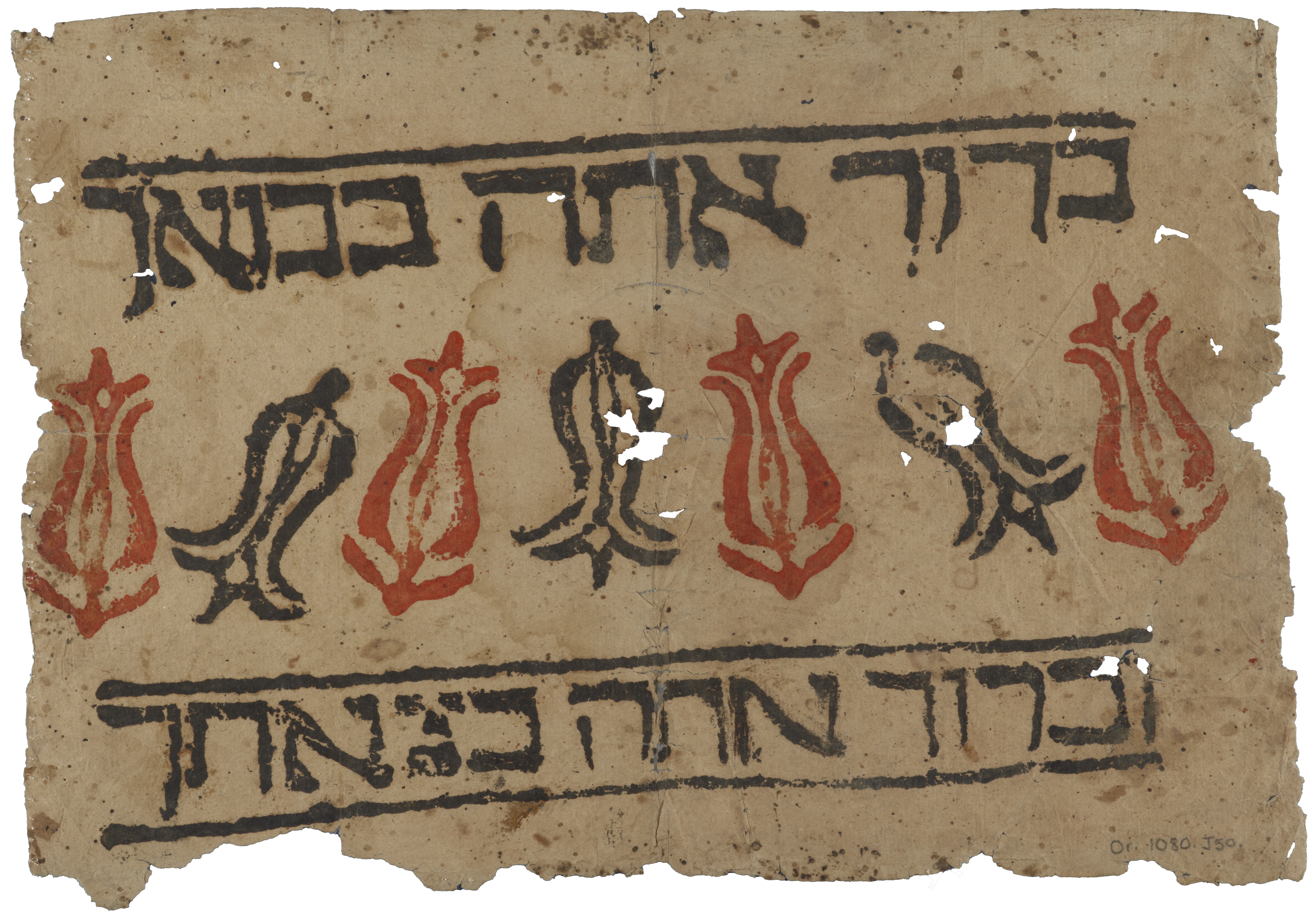Throwback Thursday: Hebrew block print

Or.1080 J50: a Mamluk block print.
Thu 28 Oct 2021
Our Throwback Thursday this week is taken from issues 5 and 6 of the printed edition of Genizah Fragments, published in April and October 1983, by Paul Fenton, with a response in the next issue by S.D. Goitein:
An exciting discovery recently made in the Unit may well open a new chapter in the history of Hebrew printing. Dr Paul Fenton has dated a Hebrew print in the Genizah Collection (Or.1080 J50) to the late fourteenth century, 100 years earlier than the generally accepted date for the rise of Hebrew printing in Europe. Although the fragment in question, from the Cairo Genizah, had been acquired by Cambridge University Library at about the same time as the Taylor-Schechter Collection – but on that occasion from a Jewish dealer in antiquities – its possible significance for the history of printing had escaped the attention of specialists. Dr Fenton believes that it is, in fact, an example of a Hebrew block-print, produced by the process of printing from carved wooden blocks. This technique was imported from China to mediaeval Egypt, where it was employed by the Muslims, mainly for the reproduction of charms and amulets, until the middle of the fourteenth century. Having earlier found examples of such Arabic block-prints, Dr Fenton surmizes that the Jews of Egypt may also have observed and adopted this method. The nature of the crudely executed Hebrew text – which translates into "Blessed are you in your coming in, and blessed are you in your going out" – offers some support for his theory. Following lively discussions between Dr Fenton and his colleagues in the Unit, two experts in oriental paper from the University of London were consulted. These specialists, who have at times been called on by the forensic department of Scotland Yard for advice, found no reason to quarrel with the suggested date and provenance.Goitein had something more to say:
In the last issue of Genizah Fragments it was reported that Dr Paul Fenton had dated a block-print to the fourteenth century. Professor S. D. Goitein prefers a slightly later date and has provided some further comments: "The mediaeval print, CUL Or. 1080 J50, mentioned in the newsletter of April, 1983, is described in detail in my book, A Mediterranean Society, volume iv, p. 123 (which is just coming out and could not have been seen, of course, by my learned pen-friend, Dr Fenton). The late eminent historian of Islamic art, Richard Ettinghausen, ascribed the print to the fifteenth century (orally, when I showed it to him). As a matter of precaution, I noted (ibid., p. 382, n.100) that he ascribed it to the late Mamluk period. A reduced photograph of the fragment is printed in the Encyclopaedia Judaica, volume vii, p. 912, with the comment: 'a fragment from a Bible, Egypt (?), 13th century (?), which is misleading. This is a placard, not part of a book".
Comments
Translation
Hello,
Could you provide a relevant translation for this fragment ?
I tried on Google Lens but it changes on each attempt so I believe it's not relevant...
Thanks a lot,
Sam
Translation
Hi Sam, the text reads ברוך אתה בבואך וברוך אתה בצאתך, which roughly translates as "Blessed are you in your coming in, and blessed are you in your going out".
The date of the fragment is
The date of the fragment is debated, what is at stake between the two hypotheses 14th century and late 15th?
I think what's at stake is
I think what's at stake is whether it is perhaps connected to the rise of printing in Hebrew in Europe or if it predates that. The earlier date would put it 100 years before Hebrew printing in Europe.
Add new comment